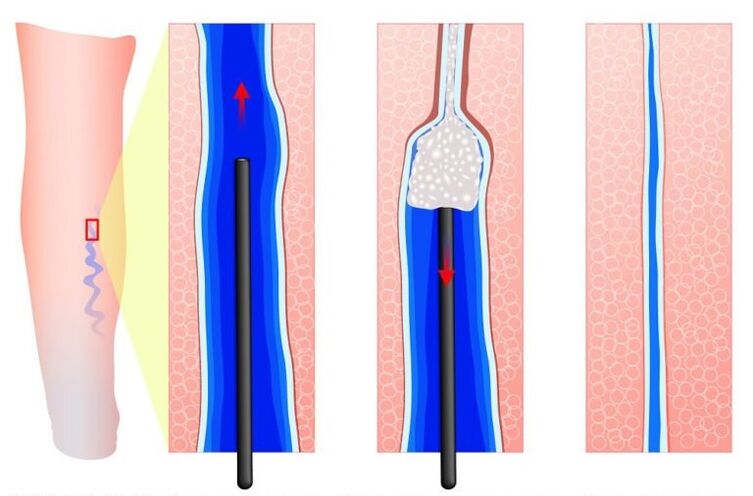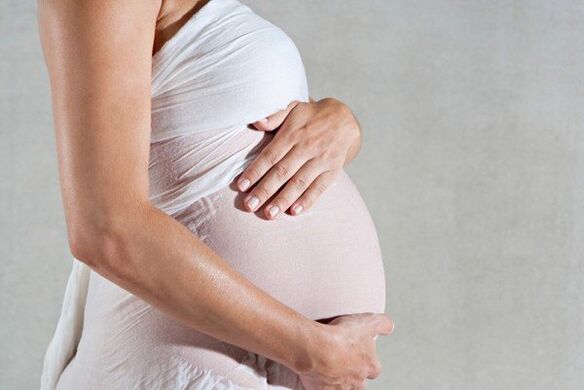Varicose veins (varicose veins) is a disease that is accompanied by an increase in length, the formation of abnormal serpentine rotation of the veins, irreversible enlargement of their lumen, and valve insufficiency. The lower pelvic organs are involved in the varicose process. The mechanisms of disease development are different. Physicians include atypical localization in the perineal region, external, and internal genitals.
General information about pathology
The process of blood flow in the veins takes place in such a way that under physiological conditions preconditions are created for the development of stagnation and blood flow.
Varicose veins of the vulva (VV) - vasodilation of the external genitalia. The disease is manifested in women who suffer from varicose veins of the pelvis and legs, as well as in pregnant women. In 30% of cases, pelvic varicose veins include the perineum and vulva.
The start of treatment for the disease is delayed due to its location in the intimate area. Women are shy. In some cases, patients do not experience any pain or discomfort. But varicose veins during pregnancy and not just carrying a fetus are accompanied by complications: venous occlusion by thrombosis (thromboembolism), impaired sexual sensitivity, pain in the perineum, psycho-emotional problems and family conflicts.
The mechanisms of pelvic vascular edema are not fully disclosed. The cause of the primary form of the disease is called malfunction of the gonadal (ovarian) venous valves. This causes the blood to back up and increase the pressure in the lower pelvic venous nodes. Valve failure can be acquired or congenital. Deteriorating with age or pregnancy.
Secondary form of VVV of pelvic organs is associated with gynecological pathologies: endometriosis, tumors of the pelvic organs.
Diagnosis of the disease is difficult because there are no specific symptoms of its course. It is based on ultrasound (ultrasound) results.
To distinguish between primary and secondary forms of pathology, the Valsalva test is used during sonographic examination. For secondary causes of pelvic varicose veins, it is negative.
Varicose veins of the labia with VBT
A doctor's examination is needed to diagnose labial varicose veins. The symptoms of the disease are as follows:
- Varicose veins on the genitals;
- Pain in the external genitalia;
- Feeling of heaviness and burning in the perineum;
- Swelling of the perineum by the end of the day.
Chronic pelvic pain is less common (in 30% of cases).
After the diagnosis is made, a study is conducted to determine the degree of complexity of the pathological process and to prescribe adequate treatment. Several events are held:
- Examination of the perineum and leg veins by ultrasound angiography - USAS;
- Perform pelvic vascular ultrasonography, including vaginal, uterine, parametric, ovarian, vaginal, inferior vena cava, and renal veins;
- Multislice computed tomography (MSCT), selective ovary and pelvic phlebography (SOFT) are performed according to the indication.
Doctors call the characteristic feature of varicose veins on the labia VBT, that the disease progresses steadily and is combined with the transformation of intramuscular veins.
Treatment of varicose veins of the vulva with varicose veins of the lower pelvis
IV treatment is prescribed according to the symptoms and diagnostic results.
Non-steroidal anti-inflammatory and phlebotropic drugs are prescribed in complex drug therapy for the treatment of systemic chronic venous pathology.
Prescribe pharmacotherapy with antiplatelets, pelvic blockade with antihypoxants, physiotherapy with ultrasound, therapeutic exercises. Antioxidants and enterobiotics are added to the therapy.
According to the indications, phlebosclerotic treatment is carried out - sclerotherapy. The vessel is "sealed" with drugs and lasers. It ceases to function. The procedure does not use special methods of anesthesia. It is performed on an outpatient basis and gives a cosmetic effect.

With the proliferation of veins in the pelvis, dilation, and backflow of blood into the veins of the gonads (ovaries), surgery to remove the veins has been shown. In case of varicose enlargement of the labia minora it is removed.
Varicose veins of the vulva during pregnancy
Pregnancy is the first most common risk factor leading to the onset of VVV. A significant and sustained increase in progesterone concentration already in early pregnancy reduces venous tone and aggravates impaired blood flow. Also, VBT, which involves the perineum and vulva, is associated with compression of large veins in the retroperitoneal region (same veins and inferior vena cava) by the pregnant uterus.

Doctors recommend compression garments during pregnancy.
Often varicose veins of the vulva occur bilaterally. Signs of the disease:
- Pronounced growth of vulvar veins at 18-24 weeks of first pregnancy, after 12 weeks of recurrent pregnancy;
- Discomfort in the groin area;
- Stretching, aching, dull pain in the pelvis;
- Pain during sexual intercourse;
- Itching of the vulva;
- Swelling of the genitals and perineum.
Signs of pathology progress with the course of pregnancy. In addition to increasing the size of the varicose vein, its compression is determined by the third trimester. A characteristic symptom of IV is its combination with varicose veins of the uterus during pregnancy or varicose veins in the legs.
Instrumental examination of labial varicose veins in pregnant women is limited to their ultrasonography, as well as ultrasound examination of the legs, as painful changes in the venous bed during the postpartum period are involutional.
In most cases (about 80%), from the first days of childbirth, the symptoms of varicose veins during pregnancy begin to decrease and decrease to a minimum 2-8 months after the birth of the baby. Full return of vessels diameter does not occur to original values.
In 4-8% of women IV does not disappear after childbirth and the disease progresses.
An interesting feature is the association between the end of the feeding period or a reduction in the volume of breastfeeding in the rate of disappearance of varicose veins in the uterine area in women. The reduced period of lactation is accompanied by the reduction and disappearance of varicose veins and vice versa. This confirms that varicose veins of the perineum during pregnancy are associated with changes in hormonal levels.
Treatment of varicose veins of the perineum during pregnancy
Phlebotropic treatment is the basis of varicose vein therapy during pregnancy. In the majority of fertile women IV begins in the II and III trimesters. Diosmin preparations can be used during this period. The severity of pathology symptoms is reduced by the micronized purified flavonoid fraction. Itching is relieved by zinc paste and H1-histamine receptor blockers.
Low molecular weight heparin in prophylactic doses prevents venous thrombosis and pulmonary embolism (blockage of blood vessels).
As a compression treatment option, it is recommended to wear tight elastic underwear using latex or marl pads. It relieves swelling of the lips and a feeling of heaviness. A special compression t-shirt for women with vulvar varicose veins helps a lot.
If any complication develops, such as local thrombophlebitis, surgical treatment is needed.
When a conglomerate of varicose veins is found on the genitals, the question arises about the method of childbirth. Natural childbirth is allowed with varicose veins of the vulva. Conversely, the risk of surgery during caesarean section is higher than the onset of bleeding from painful vessels during childbirth. This rarely happens. But caesarean section is often done with varicose veins of the vagina.
Prevention of labial varicose veins
The main factor in the formation of varicose veins in the uterine area is the carrying of the fetus. It is difficult to name any preventative method, given that there are a number of limitations to multiple therapeutic measures during pregnancy. Here are some tips to follow:
- Eliminate physical and static stress;
- Follow a diet;
- Perform therapeutic exercises in which movements accelerate blood flow from the legs and pelvic organs;
- In case of varicose veins, in the presence of varicose veins before pregnancy, it is necessary to take phlebotropic drugs, wear compression underwear.
An effective method of prevention is surgery on the ovarian veins, surgery on other pathologies related to varicose veins. This reduces the phenomenon of pelvic venous edema, reduces the risk of varicose veins in the labia.
Varicose veins of the vulva are a common disease in women with varicose veins of the pelvis, legs or during gestation.
To improve the quality of treatment of patients with chronic venous diseases, it is important to detect the disease, differentiate between the diagnosis and treatment methods of this condition.




































